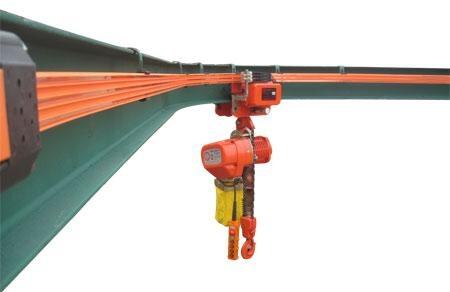Kombinácia priemyselných operácií s infraštruktúrnymi systémami stretáva výzvy pri zabezpečovaní spojitého dodávania elektrovody v extrémnych podmienkach prevádzky. Inštalácie pohyblivého vybavenia, ktoré sa stretávajú s vplyvom vlhka a kolísaniami teploty, by mali používať vodotěsné kluzivé kontaktové linky pre svoje spoľahlivé systémy dodávania elektrickej energie. Tieto systémy dodávania elektrickej energie udržiavajú prevádzkovú spoľahlivosť nahradením štandardných systémov, ktoré zlyhávajú v oblastiach aplikácií, ktoré zahŕňajú prístavy a báňské operácie, a tiež slúžia logistickým a venkovským tiažkým strojárskym odvetviam.
Navrhnuté pre odolnosť
Hlavná sila vodootpornej kluznej kontaktnej čiary vyplýva z jej schopnosti odolávať štrukturálnemu stresu. Vysokokvalitné inžinierske plastiky doplnia korózne odolné ligové cez viacero uzavíracích technológii, aby dosiahli stupne ochrany IP65 alebo lepšie, napriek nízkym teplotám a mechanickým zátěžom. Návrh úspešne zabráni vniknutiu vody a zároveň chráni pred vsturom prachu a chemickým útokom. Inžiniersky navrhnuté kluzné sbieratele konkrétneho usporiadania dráhy udržiavajú konzistenciu prevádzky a minimalizujú opotrie, v porovnaní s bežnými otvorenými konfiguráciami dráh. Zvyšovanie trvanlivosti produktu sa uskutočňuje prostredníctvom modulárneho návrhu, ktorý umožňuje výrobcam stanoviť rýchle postupy údržby pre zmenu komponentov s cieľom zachovať funkčnosť systému.
Prispôsobiteľnosť v rôznych odvetviach
Tieto systémy distribúcie elektriny poskytujú spoľahlivé elektrické zásobovanie pre kontajnerové prístavy, pretože chránia oboje – železnične namontované kráňové ječiarke a obsluhu kontajnerov pred poškodením morskou vodou a trvalým vystavením vlhku. Tornážné vybavenie môže odolávať časticom a vibráciám danky na svojich konštrukčných vlastnostiach.
Tieto riešenia slúžia ako štandardná ochrana pre automatizované skladové priestory a systémy manipulácie s materiálmi na vonkajších plochách napriek nepríznostiam, vrátane dažďa, snehu a extrémnych teplôt. Stavba veľkých výstavných objektov závisí od vodotúhlych kontaktových línií, pretože poskytujú kritickú podporu počas rýchlych obdobia stavby s nepredvídateľnými klimatickými zmienami.
Technologický pokrok
Aktuálne verzie týchto systémov používajú senzory, ktoré vykonávajú monitorovanie v reálnom čase na detekciu parametrov zahrnujúcich aktuálnu záťaž a úroveň opotriebovania kontaktu pre funkcie prediktívneho údržby. Implementácia polymerových kompozitov spôsobila zvýšenie operačného života o 40% v porovnaní s predchádzajúcimi dizajnmi a lepšia organizácia vodiča vytvára zníženie energetických strat o 15%. Moderné globálne trhy vrátane európskych centrál a juhovýchodnázijských zón prijímajú certifikované bezpečnostné systémy kvôli technologickým postupom.

 EN
EN
 AR
AR
 HR
HR
 CS
CS
 DA
DA
 NL
NL
 FI
FI
 FR
FR
 DE
DE
 EL
EL
 HI
HI
 IT
IT
 JA
JA
 KO
KO
 NO
NO
 PL
PL
 PT
PT
 RO
RO
 RU
RU
 ES
ES
 SV
SV
 TL
TL
 IW
IW
 ID
ID
 LV
LV
 LT
LT
 SR
SR
 SK
SK
 UK
UK
 VI
VI
 SQ
SQ
 HU
HU
 TH
TH
 TR
TR
 AF
AF
 MS
MS
 BN
BN
 MN
MN
 KK
KK
 KY
KY
